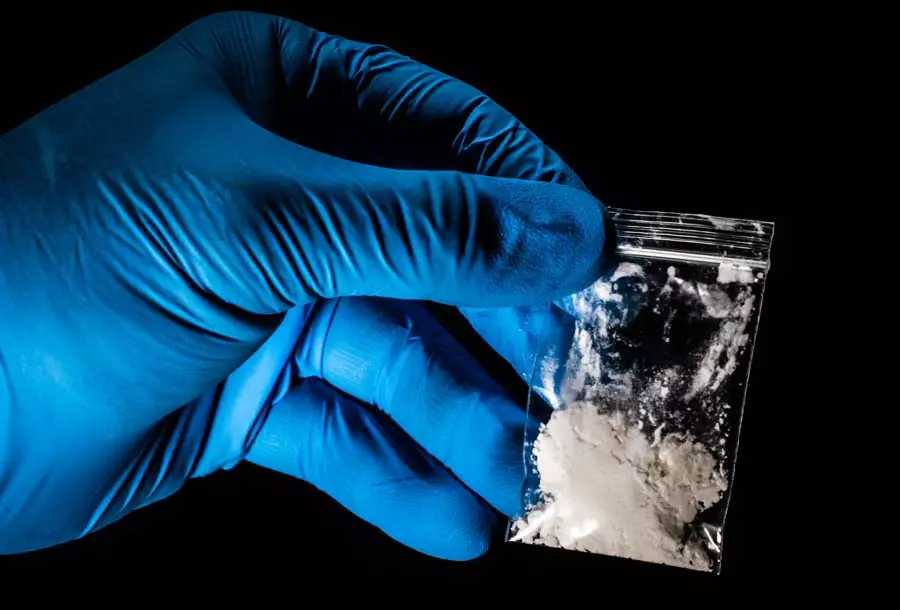Substance Abuse Treatment in Austin
Table of Contents
- Substance Abuse Treatment in Austin
- Austin Treatment Centers
- Drug Addiction in Austin, Texas: A Generational Story
- The Need for Methamphetamine Treatment in Austin
- A Proven Need: Heroin Detox in Austin, TX
- Fentanyl Detox Austin and the Rising Opioid Crisis
- Harm-Reduction Measures in Austin Texas: A Controversial Approach
- Evidence-Based Treatment Programs in Austin, TX
- The Austin Substance Abuse Recovery Community
- Living Options After Substance Abuse Treatment in Austin, TX
- AA in Austin and 12 Step Alternatives in Texas
- Find Addiction Treatment Centers Austin Now!
The city of Austin, TX, has a long history that’s flashed forward through several different eras, making the Texas capital rich in culture. With its once low cost of living, close proximity to many natural wonders, large hippie population (that’s now dwindling), and laid-back attitude, it’s not hard to believe that Austin, TX is also referred to as “The Live Music Capital of The World.”
Few know that addiction treatment centers Austin are currently rising in demand, and form a centerpiece of the city’s needs heading into the future. Currently, Austin is shaping up to be one of the largest tech cities in the world.
However, Austinites are still proud of their reputation as a vibrant community with an active social life — whether they’re watching a Longhorns game, attending art events at one of the local galleries, or enjoying music festivals like South By Southwest every year. And if you’ve ever visited this town, you know how friendly everyone can be. So why would anyone want to leave?
The rapidly increasing population would point to the fact that not many people are leaving, but there are plenty of newcomers transplanting to Austin for one reason or another. The thriving art and music scene has been a draw recently, and the University of Texas employs many people in the city. Among UT and the tech sector expansion is the reality of addiction in Austin, and the need for facilities that can help those struggling to overcome drugs and alcohol to find lasting recovery.
Keep reading to find out about addiction treatment options in Austin, and where to get help if you are in need!
The Emerging Needs for Behavioral Health Services in Austin, TX
This “peace and love town,” a stark contrast to the ruggedness of the rest of the Lonestar State, Austin has morphed into more of a progressive, trendy, neo-hipster city. Several larger tech firms like Adobe and SalesForce call Austin home, pushing it forward into more of a Silicon Valley-type city, slowly drifting away from the tie-dyed Texas hippie mecca that evolved in the 1970s.
While you can still see a watermark of that culture left on the city, Austin is climbing higher on the social rung. It wasn’t always like this, especially during the pre-hippie years of the early 1900s. Things were much slower then, and the liberal environment that transplants like Willie Nelson left on the city still left a mark that requires a proactive approach to substance abuse.
Austin Treatment Centers
Many people find themselves struggling with substance abuse, but those who live in Austin have access to several different types of rehab programs that help both those struggling with a drug or alcohol addiction.
Whether your goal is long-term sobriety or just short-term assistance while getting back on track, there are many reasons to consider moving to Austin to start fresh. Here we’ll explore the history of substance abuse in Austin and what makes it an ideal place for treatment.
Drug Addiction in Austin, Texas: A Generational Story

While Austin was founded in 1839, the presence of Native Americans had already been felt in the region before settlers arrived. Evidence suggests these early inhabitants used psychoactive plants like peyote, mescal, and other hallucination-inducing compounds. This could be perhaps the first documented evidence of drug abuse in Austin.
Before the 1970s, Austin was still a slow-paced Texas town bordering the high deserts of West Texas and the rich greenery of Central Texas. Although always a moderately-sized city, primarily thanks to the University of Texas and other colleges in the area, Austin had always been relatively conservative.
The city had always been known for its music and was a breeding ground for the Spanish-influenced “country-western” horn and pick-heavy style of music, a stark contrast from the Nashville sound that was popular around that time. Several Tennessee musicians left the Nashville area after being shunned by the rhinestone, star-studded glitz, and glamor of Nashville. They settled in West Texas, bringing the free-spirited, buzz-chasing life you usually wouldn’t find in the area.
A perfect storm ensued just as high-grade marijuana and cocaine began flooding the Rio-Grande area, making West Texas a hub for drug trafficking that still hasn’t met its end. Unfortunately, it never has shown signs of slowing and still doesn’t.
Austin is considered a High-Intensity Drug Trafficking Area, meaning a large amount of the narcotics in the area are smuggled in by Mexican drug cartels. The pot trade would eventually give way to more insidious drugs, plaguing Austin with challenges it continues to deal with now.
The Need for Methamphetamine Treatment in Austin
In the 1970s and 80s, most of the meth produced was crafted using a variety known as P2P, using phenyl-2-propanone and producing much larger yields of a purer brand of “ice.” Austin was a hotbed for this brand of meth, driven by the hippie and biker community that had a foothold in the community.
Law enforcement measures eventually culled much of the problem, leading to a methamphetamine “remission” throughout the late 90s and early 2000s. However, a familiar demon is back with a vengeance in the Austin area, causing levels of overdose and addiction like the area has never experienced.
Purity levels of this meth are even higher than the batches circulating in the 70s – up to 98% in some instances. Because of the adverse effects, the ingredients this particular version of meth has on the brain, accompanying mental health disorders are a regular occurrence.
Besides the mental health/substance abuse combo meth has pounded the city, heroin trends in Austin have followed the rest of the nation, leaving rising death tolls in its wake.
A Proven Need: Heroin Detox in Austin, TX
Like the rest of the country, heroin abuse has noticeably continued its steady climb, with addiction and overdose numbers doubling and tripling in the last decade. Austin has experienced more significant challenges with heroin than other West Texas cities and Southwest United States metro areas like Phoenix and Albuquerque.
In the past, most cities west of the Mississippi river, including Dallas and Austin, experienced challenges with black tar heroin produced in Mexico. Although deadly, this less-potent, more crudely made version didn’t have nearly as many overdose deaths as the potent Asian and South American heroin available on the East Coast.
While the black-tar version continues to be the brand of choice for cities in the Southwest United States and beyond, and even in Dallas, Austin has dealt with the dead powdered version of the drug, which now consists of mostly fentanyl. In fact, at the time of the last update to this article, in February 2023, Austin, Texas, is currently experiencing unprecedented numbers of opioid overdose deaths, all of which point to fentanyl.
Fentanyl Detox Austin and the Rising Opioid Crisis

One hundred seventy drug overdoses were reported in Austin in 2021. With over seven months left to the year, the city is already sitting at around 100, well over half of last year’s number. This is a culmination of many overdoses, with record years achieved each year since 2018. The city recently filed for an emergency $3 million in funds to combat the area’s current overdose death spike.
It recently paid out $50,000 to two separate groups to purchase fentanyl test trips in the community. In practice known as harm-reduction, measures are taken to mitigate the number of deaths, taking a completely different stance than more conservative areas, which has caused tension in the Texas political world.
Harm-Reduction Measures in Austin Texas: A Controversial Approach
In a push made by President Joe Biden, many liberal cities are providing hand-out packages with various drug supplies, including those to test, use, and battle overdose. Austin, Texas, is beginning to follow suit, pleasuring other Texas cities to hop on board, causing significant controversy in the state.
These packs include syringes, glass pipes, alcohol pads, fentanyl test kits, and Narcan. Many argue that “harm-reduction” turns a blind eye to substance abuse, but the problem runs deeper than simple bi-partisan head-butting in Texas.
In matters of Texas rehabs and otherwise, old laws still run the state with an iron fist, and things like glass pipes and misuse of insulin syringes are still met with arrest and even prison time. Other parts of the country have steadily shifted their approach, taking similar harm-reduction stances on substance abuse or, at the very least, offering treatment in exchange for simple possession of narcotics or felony paraphernalia.
While the battle still rages on fringe topics, Austin makes headway in the category of substance abuse and mental health treatment, making it a suitable getaway for transients seeking recovery temporarily and even transplants making a permanent move.
Evidence-Based Treatment Programs in Austin, TX
There are many addiction treatment services available in Austin that are designed to help address both substance abuse disorders, as well as the underlying mental health issues that may be contributing to these habits.
In order to ensure that its residents and travelers receive the most comprehensive care possible, Austin offers various evidence-based therapies and mental health rehab services alongside their more experimental rehab programs, which follow a more holistic approach to the addiction recovery process.
Inpatient Treatment Versus Outpatient Treatment
Inpatient and residential rehab centers in Austin can provide evidence-based care for drug and alcohol addiction. Residential treatment programs can offer their clients a more individualized treatment plan. These programs provide more intensive care and additional support to those struggling with more severe substance use disorders.
An inpatient treatment program can be better for those experiencing withdrawal symptoms or intense drug cravings, which are more prominent in chronic relapse clients. These may also be a better option for long-term recovery, as inpatient treatment can provide a full continuum of care to their clients.
Partial hospitalization programs, intensive outpatient programs, and standard outpatient programs can all provide treatment on a more flexible and affordable basis. These programs will focus more on teaching their clients life skills and coping mechanisms for making their everyday life easier to manage as they navigate their addiction recovery process.
Whether seeking treatment through an inpatient or outpatient Austin center, the behavioral health services offered through this city can help you overcome your substance use disorder and achieve a healthier and more fulfilling lifestyle.
Mental Health Treatment and Dual Diagnosis Treatment
In many cases, a person’s substance use disorder is fueled by underlying mental health issues. The emotional pain caused by their mental health condition can lead them to begin abusing drugs or alcohol as a form of self-medicating.
If you are struggling with a co-occurring mental health and substance use disorder, you can significantly benefit from seeking treatment at a dual-diagnosis treatment center in Texas. These facilities serve as the pinnacle of Austin rehab programs, helping residents and out-of-state travelers alike address all aspects of their addictive habits.
The Austin Substance Abuse Recovery Community
A big part of successfully recovering is having a solid support network. There are many ways to get support when you need it most, including therapy sessions and group meetings, which can help empower individuals by connecting them with like-minded individuals on their own recovery journeys.
Many rehab centers offer outpatient care, meaning patients may go straight from their homes to classes or counseling sessions, making treatment feasible if they work or attend one of the many universities in Austin.
This gives them more freedom than staying in a facility for 30 days or more, although many inpatient options exist in Austin with fantastic dual diagnosis and other mental health programs. You shouldn’t feel pressured to commit before talking to others about their experiences.
It helps to talk things over first with friends and family members, even though they probably won’t be able to give you honest advice. In these cases, speaking with addiction specialists will be your most informative option for seeking treatment. Ultimately, only you can decide which approach works best for you.
Using Find Addiction Rehab’s comprehensive search database offers nearly every option for treatment and support programs in the area. Their powerful search filters allow you to craft a tailor-made inquiry, complete with supporting articles and other pertinent information regarding substance abuse.
Living Options After Substance Abuse Treatment in Austin, TX
If you choose to move to Austin, you should consider housing. Finding affordable accommodations isn’t easy anywhere, especially in larger cities, and Austin does boast the highest cost of living in all of Texas.
Depending on your situation, you could save money by choosing shared housing instead of paying for individual rooms. There are also halfway houses available for individuals exiting treatment, which can help place you into a more permanent location, allowing you to get o your feet.
AA in Austin and 12 Step Alternatives in Texas
The area is rife with plenty of support groups like Alcoholics Anonymous (AA) and Narcotics Anonymous (NA). Believe it or not, Austin, TX, is home to a large community of out-of-towners seeking to recover, and the support group scene is thriving, giving you dozens of options for alternative meet-ups.
You don’t have to worry about finding transportation once you arrive in Austin. Public transit is excellent throughout the entire metropolitan area, offering everything from bus routes to light rail lines. However, if you plan to spend much time outside the downtown district, you should take advantage of car rentals available around the city. Taxis are also widely used within city limits.
In a city like Austin, packed with thriving professional cultures of many varieties, gainful employment won’t be a problem after treatment. Additionally, support groups also lend another pillar required for long-term success.
Find Addiction Treatment Centers Austin Now!
Austin might be a great option if you’re thinking about treatment and have a tech-focused, arts, or musical background. Additionally, simple music fans and outdoor enthusiasts might find it a great temporary home for inpatient rehab before heading back to your stomping grounds.
Regardless, Find Addiction Rehabs is a great starting point, giving you all the tools you need to build a successful plan for treatment. If you are struggling and need services in the Austin area, please reach out now for a confidential discussion and get options for your recovery now!
Charles F. has been an active part of the Florida recovery community for over 5 years. He began as a behavioral health technician at an addiction treatment facility in Ocala, Florida and has since begun training as a Licensed Addiction and Chemical Dependency counselor in Boca Raton. Charles’ passion involves the promotion of recovery and helping spread the hope of recovery to as many readers as possible!


